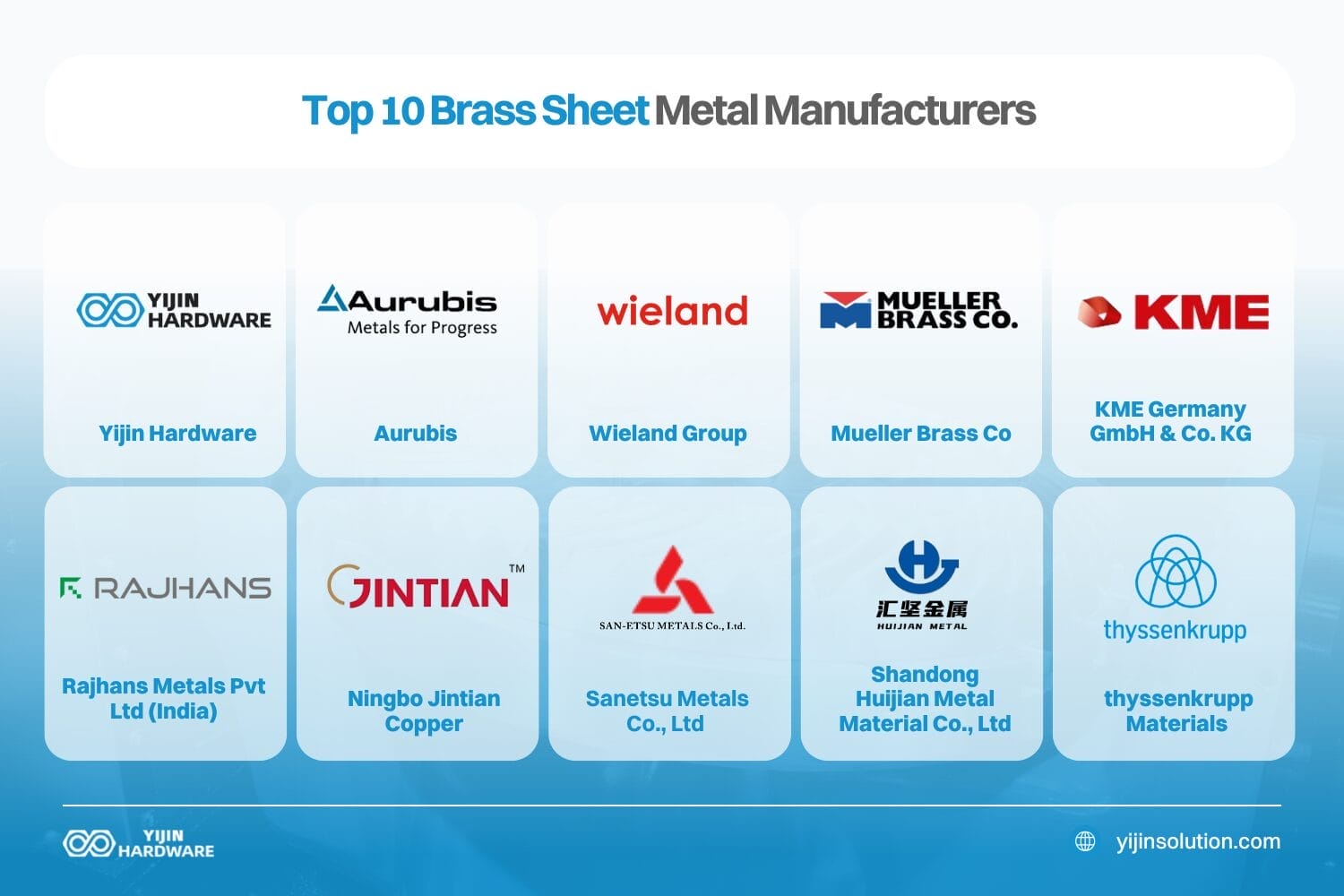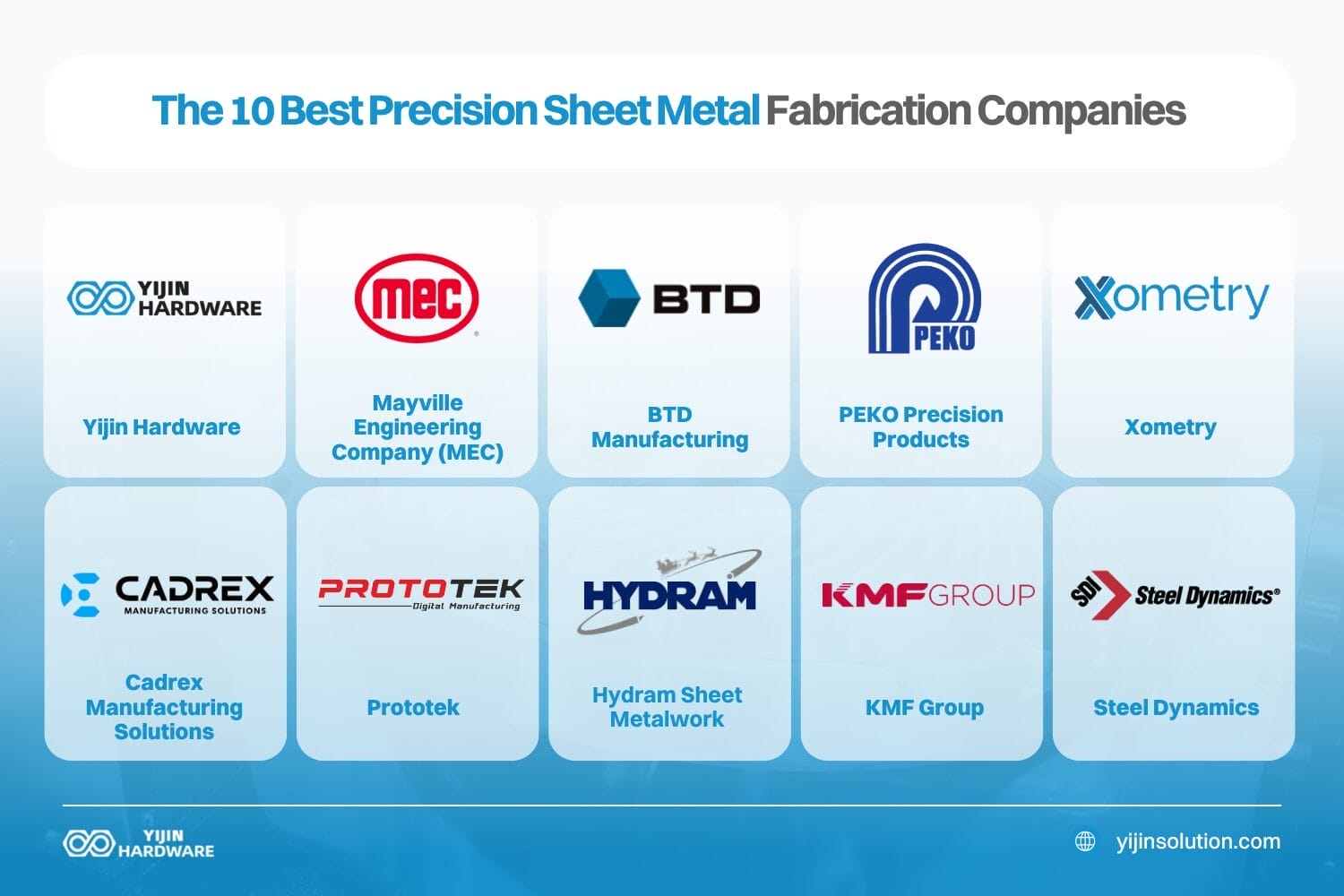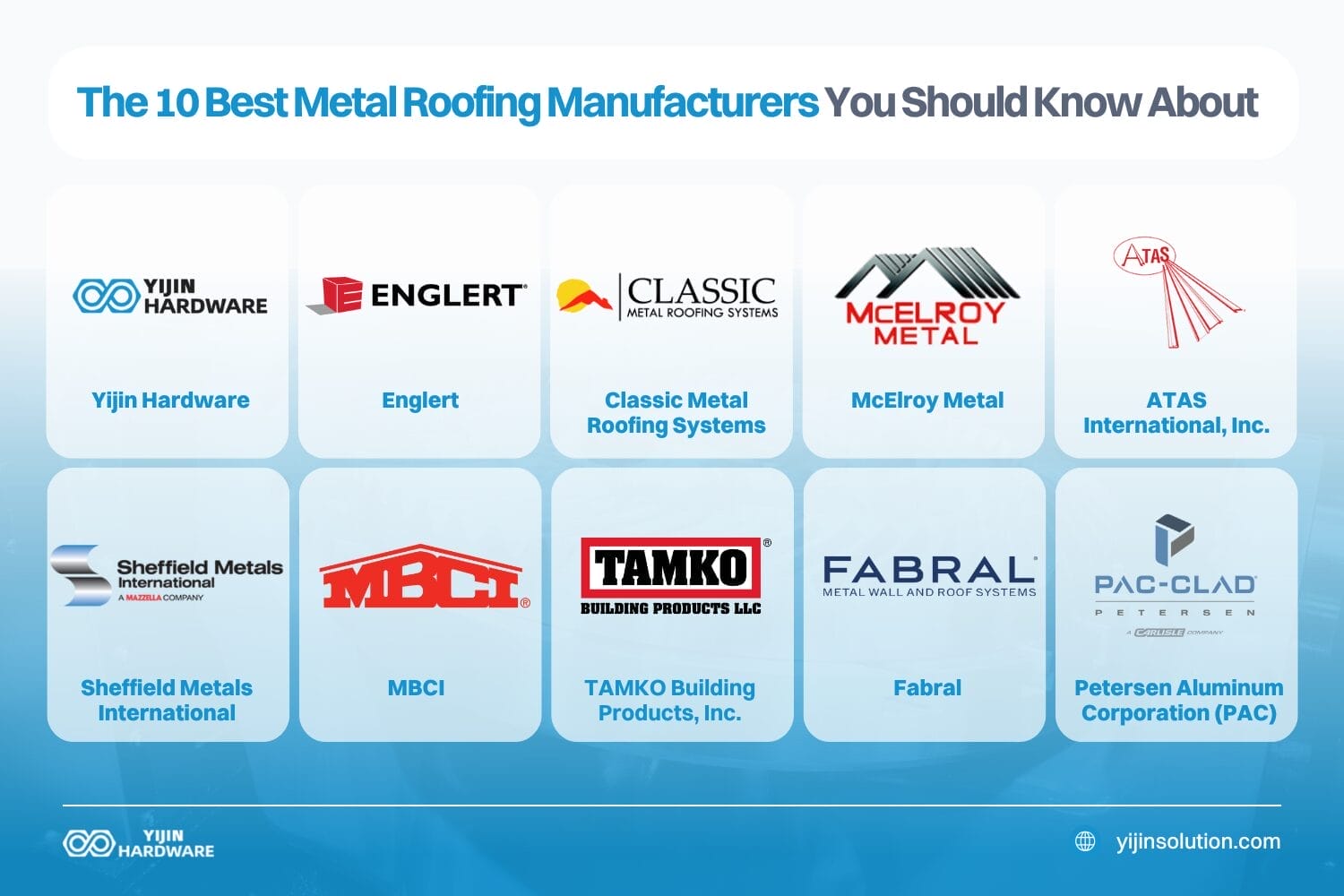Ever wonder how flat metal turns into car parts or appliance housings? That’s sheet metal forming. We take flat sheets and bend, stamp, or draw them into 3D shapes. No cutting or drilling. Just reshaping what’s already there. The metal actually gets stronger during forming because the grain flow follows the new shape.
How does it work? We push the metal just hard enough. Too little force, nothing happens. Too much, it breaks. Hit that sweet spot, and metal takes a new shape permanently. These days, we use computer-controlled machines for the job. CNC sheet metal forming gives super precise results even when making thousands of identical parts.
Key Takeaways
- Sheet metal forming process creates super complicated 3D shapes without getting rid of material, giving you the best strength-to-weight ratios
- Cardinal parameters like K-factor, bend radius, springback, and punch and die clearance make or break your success
- Metal materials and their properties (like ductility and grain direction) hugely impact formability and final part quality
- Advanced forming techniques such as hydroforming and electromagnetic forming let you create geometries that were impossible before
- Smart design considerations for sheet metal parts prevent common defects and slash manufacturing costs
What Exactly is Sheet Metal Forming?
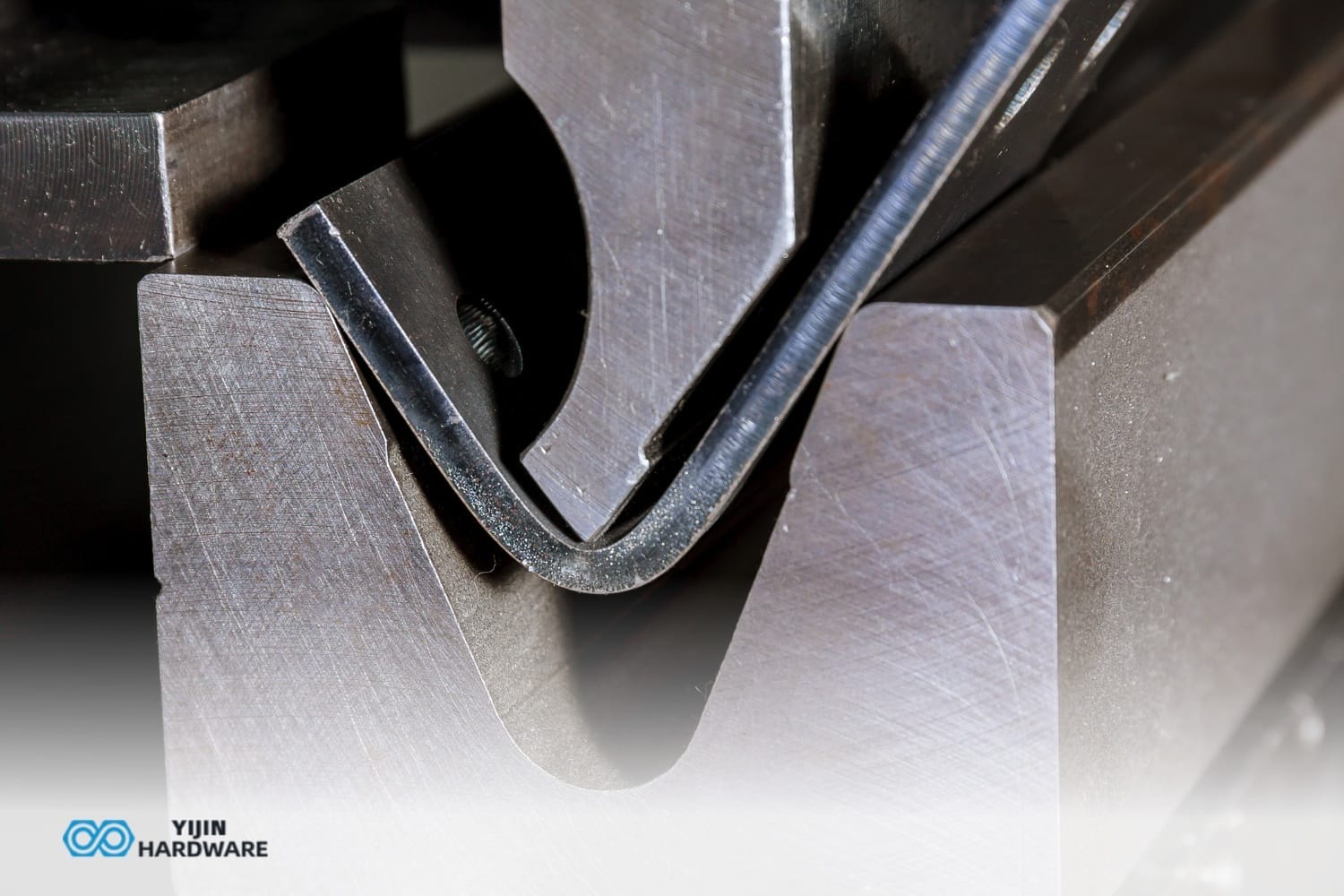
Sheet metal forming takes flat metal and reshapes it without adding or removing anything. Think of it like metal origami with serious pressure. We just bend and stamp. Then, we draw the metal into fresh shapes. This actually changes the metal’s internal structure. It makes it much, much stronger, but also keeps it lighter than machined parts.
This is totally different from cutting methods. We’re keeping all the material and just rearranging it. The result? Stronger parts because the metal’s grain structure follows the new shape. That’s why formed sheet metal works so well for car bodies and airplane components — great strength without extra weight.
Most of the time, we’re working with thin stuff — under 6.35 mm (1/4 inch). Anything thicker gets called plate forming. Depending on temperature, we’ve got different approaches: cold forming at room temp, warm forming around 600-950 °C, or hot forming at even higher temps. Each works better for different sheet materials.
| Forming Type | Temperature Range | Key Characteristics | Uses |
|---|---|---|---|
| Cold Forming | Below recrystallization | Increases hardness, enables precision | Automotive panels, electronics housings |
| Warm Forming | 600-950 °C | Combined advantages, homogeneous surface | Complex steel alloy components |
| Hot Forming | Above recrystallization | Lower force required, complex geometries | Large structural components |
What are the Main Sheet Metal Forming Processes?
Let’s break down the main ways we shape sheet metal:
- Bending is probably what you picture first — we use a press brake or dies to create angles and folds.
- Deep drawing pulls metal into a die cavity to make cup-shaped or hollow parts.
- Metal stamping uses matched tools (like cookie cutters on steroids) to bang out identical parts superfast.
- Hydroforming is the fancy option — we use high-pressure water or oil instead of solid tools. The fluid pushes metal into shape, giving even thickness throughout.
- Roll forming feeds metal through a series of rollers to gradually shape it. Perfect for making long stuff with the same cross-section.
Deep Drawing Stages
- Stage 1: The blank sheet is held between die components
- Stage 2: First punch contact and plastic deformation starts
- Stage 3: Material flow into die cavity with thinning
- Stage 4: Final forming with corner filling and springback compensation
What Makes or Breaks Your Sheet Metal Parts?
Let’s talk about the numbers that really matter in sheet metal forming. First up is the K-factor – it tells us how much the metal moves during bending. Different metals have different kinds of K-factors. We use a formula for this type of thing. K = t/T. Just so you know, t is the distance from the inner bend to the neutral axis. T is total thickness.
Bend radius is make-or-break stuff. Go too small, and your part cracks. Each metal needs different minimums — aluminum wants 1.5-3 times material thickness, mild steel can handle 1–2 times, and stainless steel needs 2–4 times. Skip this rule at your own risk!
Ever notice how metal tries to bounce back after bending? That’s springback. We have to overbend parts just the right amount to get final dimensions spot-on. We use some fancy math with bend allowance (BA) and bend deduction (BD) formulas to nail it. Get these calculations wrong, and you’ll have a pile of expensive scrap metal!
| Parameter | Formula/Range | Importance | Material Impact |
|---|---|---|---|
| K-Factor | K = t/T | Determines material stretching | 0.33 for aluminum; 0.40-0.50 for stainless steel |
| Bend Radius | 1.0T-4.0T | Prevents cracking | Larger radius needed for harder materials |
| Springback | Function of material elasticity | Affects final dimensions | Higher in high-strength materials |
| Die Clearance | C = (P-D)/2 | Controls edge quality | 5-20% of material thickness |
How Different Metals Behave During Forming
Metal choice makes a huge difference in forming. Stainless steel? Super strong and won’t rust, but fights back during forming. Aluminum? Lightweight and forms easily, but springs back more. Copper and brass? Great formability and conduct electricity like champs, but they’ll cost you.
Grain direction matters big time. Think of metal like wood with grain. From across the grain, and you’re good. Form with the grain, and you’re asking for cracks. The thicker your metal, the bigger your bend radius needs to be — it’s just physics.
Sheet metal has personality traits called n-value and r-value. A higher n-value means the metal stretches more evenly — great for tensile forming. Higher r-value means it resists thinning — perfect for deep drawing. It’s like knowing whether someone’s better at sprinting or marathon running!
| Material | Formability | Strength | Applications |
|---|---|---|---|
| Stainless Steel | Moderate | High | Medical, food processing, architecture |
| Aluminum | Good | Moderate | Aerospace, electronics, outdoor equipment |
| Cold-Rolled Steel | Excellent | Moderate-High | Automotive, appliances, structural components |
| HSLA Steel | Limited | Very High | Structural components, heavy machinery |
| Copper/Brass | Excellent | Low-Moderate | Electrical components, heat exchangers |
Design Tricks for Better Sheet Metal Parts
Smart design makes all the difference in sheet metal. First rule: bend radius should be at least equal to material thickness. Going smaller is asking for cracks. Holes need to be at least as big as the sheet is thick, and keep them at least three sheet thicknesses away from any bend. Trust me, your shop floor will thank you.
For flanges, use this simple rule: length should be 4× material thickness + bend radius. This gives enough material to form properly without wasting metal. When bends come near cutouts, add bend relief cuts at least 1.5× material thickness wide. These little notches prevent tearing.
We can typically hold ±0.005″ between features and ±0.010″ from bends to edges. Not bad, right? Always run your design through DFM (Design for Manufacturability) analysis before production. Finding problems on screen is way cheaper than finding them on the shop floor!
Design Rules That Save Headaches
- Minimum bend radius ≥ 1× material thickness — skimp here and watch things crack
- Keep holes at least 3× material thickness from bends — or watch them warp
- Make flanges at least 4× material thickness + bend radius — stability isn’t optional
- Add bend relief cuts 1.5× material thickness wide — prevents nasty tears
- Use consistent bend radii throughout — your shop floor folks will buy you lunch
New Technology Changing Sheet Metal Forever
The sheet metal fabrication world is getting some serious upgrades lately. Modern sheet metal forming involves revolutionary techniques that are transforming the entire manufacturing process. Hydroforming uses fluid pressure (up to 100 MPa!). The fluid pushes metal into shape, giving perfect thickness everywhere across metal components. Car and plane makers love this process, used for lightweight parts with complex shapes.
Electromagnetic forming is like magic — it uses magnetic pulses to shape metal without even touching it. Works amazingly for aluminum and copper components. No tool contact means no surface marks. That’s perfect for parts that need to look good, too. Especially for custom sheet metal fabrication service clients needing perfect finishes.
Incremental sheet forming is the DIY approach to the manufacturing process.
A CNC-controlled forming tool pushes the metal into shape bit by bit. No expensive dies. This sheet metal forming involves minimal tooling investment. It’s great for prototypes or small runs. Flexforming uses a rubber diaphragm with fluid pressure behind it — kind of like hydroforming’s cheaper cousin, but still creating high-quality metal components with the process used by leading fabricators.
According to some experts, the sheet metal market is around $341.8 billion in 2025.
Tomorrow’s Forming Tech Today
- Multi-point forming: Like a bed of pins that reconfigure into any shape — endlessly adaptable!
- Warm aluminum forming: Heat it just enough to make it bendy — perfect for tricky alloys
- Laser-assisted forming: Zap it with lasers to soften just the spots you need — super precise
- Hot gas forming for high-strength steels: Makes even the toughest metals cooperate
- Servo-press forming: Computer-controlled press movements for perfect parts every time
How We Make Sure Every Part Is Perfect
Quality doesn’t happen by accident. We use optical scanning to compare actual parts against CAD models in real-time. These fancy cameras catch even tiny deviations without scratching your parts. ISO 9001 standards keep everyone honest about what “good” really means.
Before forming begins, we verify what the metal actually is using Material Test Reports (MTR). These confirm chemical makeup and mechanical properties. First Article Inspection (FAI) checks the first production piece against design specs before making more. This catches problems early when they’re cheaper to fix.
How We Check Your Parts
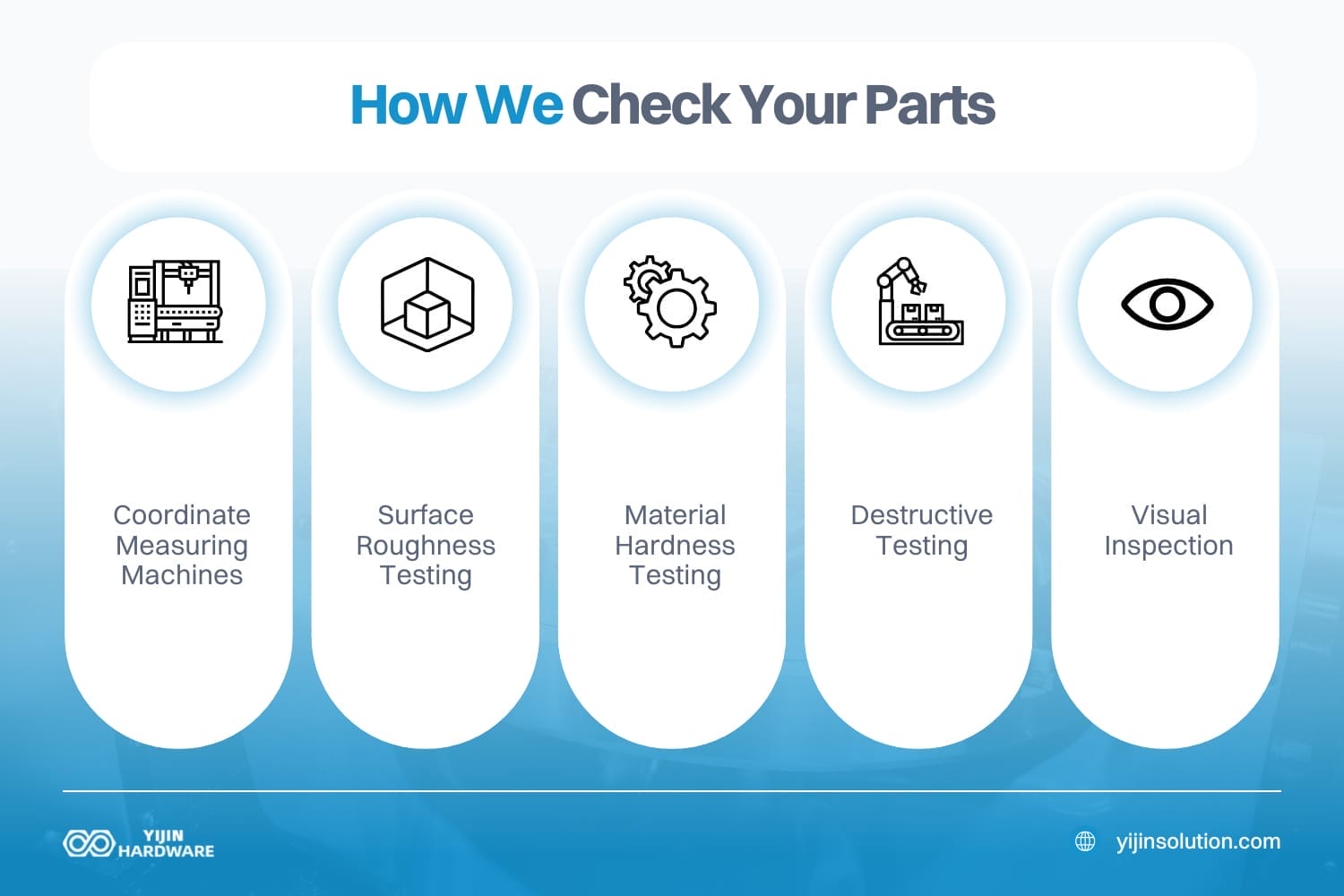
- Coordinate Measuring Machines (CMM) for exact dimensions — down to microns
- Surface roughness testing for perfect finish — smoother than a baby’s bottom
- Material hardness testing to verify strength — tough enough for the job
- Destructive testing of sample parts — we break some so yours won’t
- Visual inspection for surface issues — because robots can’t catch everything
Ready for Top Notch Metal Parts?
Yijin Hardware has the best forming methods, and we use the top sheet metal materials. Our team knows exactly what to do. The manufacturing process we use mixes our methods with the latest tech.
Sheet metal manufacturing is all about tons of cardinal decisions. That includes press tonnage and bend sequence. It’s also about springback compensation for every single little piece of sheet metal.
Contact our engineering team today for custom sheet metal fabrication services.
Sheet Metal Forming Methods FAQs
What’s the difference between sheet metal forming and fabrication?
Forming just reshapes metal sheets without adding or removing material – think bending and drawing. Fabrication is the whole enchilada – forming, cutting, joining, and finishing operations all together. Think of forming as one step in the bigger fabrication process, focused just on changing the shape through deformation.
How do you keep parts from getting too thin during deep drawing?
It’s all about controlling the blank holder pressure, using the right lube, and having proper die corner radii. The blank sheet needs enough holding force to prevent wrinkles but still allow metal to flow into the die. Many shops use varying pressure during the cycle – tighter at first, then easing up as the draw progresses.
Can you make threads in sheet metal during forming?
Sheet metal forming can’t directly create functional threads like machining does. But we can make thread-ready features through extruding, dimpling, or clinching that prep the metal for thread-forming fasteners. For real threads, we typically form the part first, then add threads with secondary operations like thread rolling or tapping.
Back to Top: What is Sheet Metal Forming? | Full Guide







